
Pattison Food Group advances an ambitious expansion strategy on both sides of the border
by Marjo Johne
Western Canada’s largest and fastest-growing grocery business is, within the context of national food retail, still a relatively small player. With a network of about 300 stores operating under 11 banners, the Pattison Food Group has remained a regional entity throughout its 107 years in business.
That’s changing fast, and in ways industry observers may find surprising. Even as its banners continue to adjust to the market changes brought on by COVID-19, the Pattison Food Group has made bold moves to advance a vision that will see the business expand way beyond its current corner of the country.
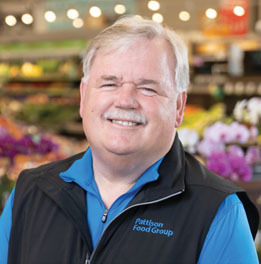
“We’re going to continue to grow in Western Canada but we’re also looking to purchase stores from northern California up to Washington and the Canadian border and probably as far east as Idaho—that’s where we’re looking right now,” says Darrell Jones, president of the Pattison Food Group, which the Jim Pattison Group Inc., based in Vancouver, formed last year to bring together its grocery and wine retail banners that include Save-On- Foods—the signature banner with more than 175 stores—Urban Fare and PriceSmart Foods.
“There’s a tremendous amount of opportunities for our business to grow, and we will be pursuing those opportunities,” he adds.
Controlling the supply chain
The business has certainly grown in its home base over the last five years, with 40 stores added in Alberta, B.C., Manitoba, Saskatchewan and the Yukon. At the same time, the Pattison Food Group has bolstered its production capabilities. Last year, it acquired Sun Rich Fresh Foods Inc., a high-volume processing operation— with facilities in Brampton, Ont., and Richmond, B.C.— that supplies bulk cut fruit and fresh salad kits.
The Sun Rich deal expanded and diversified the company’s production division, which already included Monte Cristo Bakery—also a recent acquisition along with pharmacy distributor Imperial Distributor Canada Inc.—and Five Corners Meat Co., which had been serving Save-On-Foods, Urban Fare and PriceSmart.
“We’re trying to create a situation where we have greater control of our destiny,” says Jones. “That’s why we bought these businesses—to have more control of our supply chain.”
That enhanced supply chain is already creating efficiencies at the Pattison Food Group and has started to serve retail operations south of the border. Last October, the Pattison Food Group announced it was buying Roth’s Fresh Markets, a chain of nine stores serving Oregon’s mid-Willamette Valley. That deal—which marked Pattison Food Group’s first acquisition in the U.S.—expanded in March, when Roth’s bought Chuck’s Produce and Street Markets, which has two stores in Vancouver, Wash.
“What made the Roth’s acquisition especially great for us is the fact that the people at Roth’s are very focused on their customers, their team members and their communities,” says Jones. “They were a great fit for us because we’re not just looking to make acquisitions from a growth strategy perspective. We’re looking for companies with great management and that are people focused, just like we are.”
This non-negotiable criterion is one that has been and will be applied to every acquisition, every move to advance the Pattison Food Group.
“Our vision is really simple: we want to be the leader in every market we serve, and we do that not just by offering world-class customer service and a great selection of products but also by doing the right things for our customers—which includes our employees – and our communities,” he says. “Because it’s not enough to do the right thing for your business; you also have to do the right thing for people.”
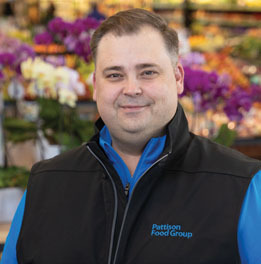
Bringing all grocery banners under a single corporate structure is, without a doubt, the right thing for these businesses and the people they serve, says Ben Harrack, a senior vice president at the Pattison Food Group.
“It’s about offering support to help them to where they want to guide their business,” he says. “Each of our banners has achieved a level of success and we want to ensure they can continue to build on that success and keep growing.”
The new structure was created primarily to achieve greater efficiencies, with lower operating and product costs. While it’s still “early in the process and we’re very much learning how to leverage our synergies,” says Harrack, these efficiencies are likely to come from the group’s greater purchasing power, shared supply chains and marketing capabilities, as well as information technology, warehousing and fulfillment infrastructures.
Jones points to other areas where greater efficiencies can be realized by centralizing services, including payroll and real estate-related functions such as site locating and leasing.
“All those banners don’t need their own real estate department to find sites,” says Jones. “We’ll be looking at non-customer-facing costs and figure out a way to synergize.”
But any consolidations and economies of scale have to make sense for each of the banners and the markets they serve. A one-size-fits-all approach simply won’t work.
“Finding synergies takes time, and we have to take the time to understand each other first before we can collectively decide what’s to be centralized and decentralized—that will depend on the banners and what they need for their customers,” says Harrack.
“Each of our banners has a very distinct identity, and across each banner every store has something unique about it that’s tied to its particular market and community. In the end, it’s about making sure we have the right products in the right store, and it’s the leadership at each of our banners that will determine what that looks like.”
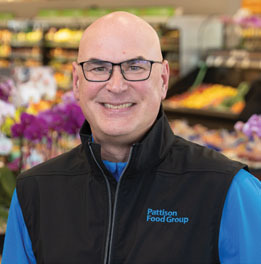
Under the Pattison Food Group’s connective structure, the banners have new opportunities to bring in products and ideas from other banners, says Cope. Stores interested in bolstering their organic and natural grocery products offerings could, for example, tap into the expertise and supplier network at Nature’s Fare Markets, located in B.C.’s Okanagan and Lower Mainland regions. Those looking to expand their ethnic aisle could turn to PriceSmart Foods for know-how on meeting the needs of the Asian market.
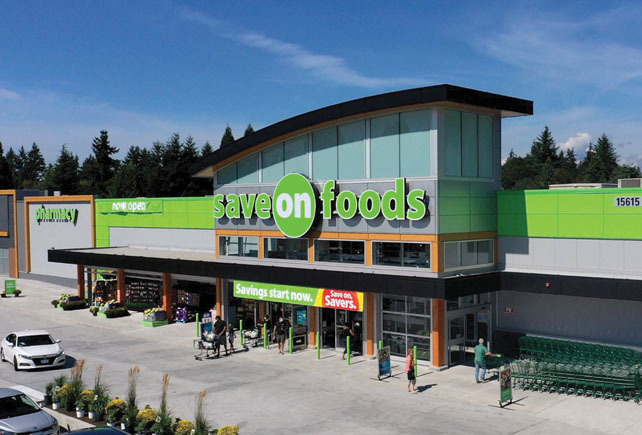
“There’s also the possibility of other banners participating in our private label program if they don’t have their own corporate brand,” says Cope. “Also, some banners do e-commerce while others don’t, so there may be opportunities for the banners that don’t do e-commerce to learn the technology and processes from a banner that has experience with it, like Save-On-Foods.”
Since the Pattison Food Group was formed, the banner leaders have spent time getting to know each other. Cope says one of the first things he noticed during these occasions was the sense of pride leaders felt about their stores.
“You could just see how uniquely proud they are of their banners, and of how they go to market and connect with consumers,” he says. “From my perspective, that’s the part I’ve enjoyed the most so far about this new group: meeting some incredibly talented people across the different banners and getting to understand them. We are, each of us, quite unique but we also discovered a lot of shared DNA.”
Together but different
Preserving each banner’s unique identity is critical to the grand plan at the Pattison Food Group, says Harrack. That means, first and foremost, embracing the fact that every banner and store has been shaped by its community and respecting that each banner is the authority in its market.
“There is a real level of expertise at each banner, especially at the more specialized retailers like Nature’s Fare,” says Harrack. “One thing I’ve learned from meeting with the other banners is how much we share customers back and forth. We complement each other. Save-On-Foods may not get all the shop from a customer, but that same customer will go to Nature’s Fare and pick up the rest of the items on her shopping list. It’s a matter of putting the right stores in the right neighbourhood.”
The mass-merchandising approach won’t be coming to the Pattison Food Group anytime soon, says Jones. Not even at Save-On-Foods which, despite its size, retains its local, home-grown identity in every community.
“The uniqueness comes from how they merchandise and how the presidents and general managers plan to go to market with their customers,” says Jones. “For example, Nature’s Fare is about whole, healthy and natural foods; PriceSmart is about the best possible mix of Asian foods; and Urban Fare is about more upscale specialty products you can’t get anywhere else. “Then we’ve got Quality Foods, which has been on Vancouver Island for 40 years, so they really understand the needs and wants of the people on the Island. The way each of these banners go to market will be quite different—you can never take that away; the banner leaders will always have that autonomy.”
Focus on local
A key factor in maintaining each store’s community-based identity is the ongoing focus on local, says Jones. The company’s private-label brand, Western Family, features more than 1,000 products that are locally made.
The Pattison Food Group recently built a new test kitchen in Langley, B.C., where its team works with local suppliers to develop and test recipes for the Western Family brand.
“It’s very important for us to buy local, and we have sections in our stores that are dedicated to products from the local entrepreneur that makes this great salsa or this great strawberry jam,” says Jones. “Many of these local products that we’ve put into our stores have gone on to success as national products. One product even got shipped to the White House when Barack Obama was president because he really loved it.”
At Save-On-Foods, that focus on local has created a market for more than 2,500 products from more than 2,000 local growers and producers. This means shoppers at every store, from Winnipeg to Whitehorse, will find products on the shelves that are sourced from their community.
“So, for example, for some of our stores, at certain times of the year, we can make huckleberry pies because we work with a farm in Cranbrook, B.C., that grows huckleberries,” says Jones. “You don’t usually see huckleberry pie at a grocery.”
A number of Save-On-Foods stores feature international stores-within-a-store stocked with food from around the world. The banner also boasts a broad wine selection in 21 stores, including B.C. wines that have the VQA appellation.
“Some of the best wines in the province are inside 21 of our stores in British Columbia,” says Cope. “For us as a company, one of our strengths is staying on top of trends and making sure we’re bringing them to the customer.”
Unique and on-trend products
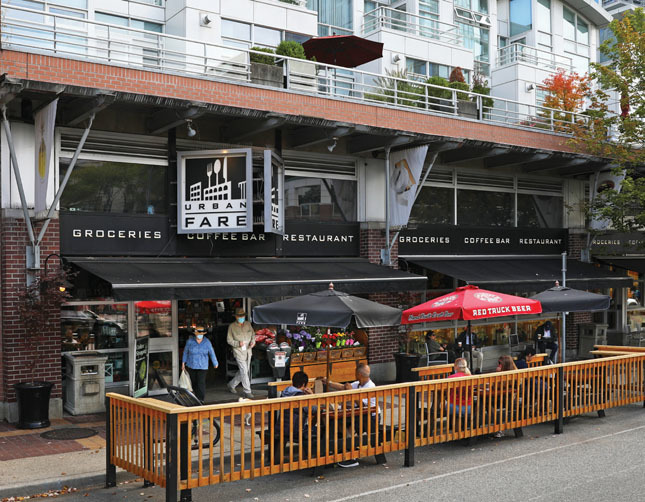
Beyond huckleberry pie, there are many other unique products on the shelves or on their way to the stores within the Pattison Food Group. Within PriceSmart and the other banners’ ethnic aisles, the selections continue to grow to include exotic fruits such as kiwi from South Korea as well as product lines from emerging cuisines such as Filipino, which in past years could be found only in specialty stores.
Urban Fare, which has five stores in B.C. and one in Alberta, recently expanded its cheese selection and in-store restaurant offerings. Depending on which store they go to, shoppers can sit down to a poke bowl, sushi, tacos or Mexican grill.
Market wisdom from the ground up
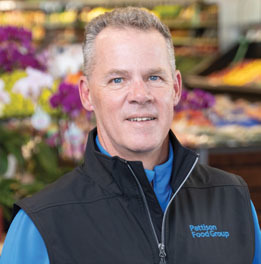
Data analytics has been helpful in identifying emerging trends, says Jamie Nelson, chief operating officer at Pattison Food Group and executive vice president at Save-On-Foods. The company’s loyalty program, More Rewards – which became a separate operating unit in 2019, reporting to Jones—provides a rich and ongoing source of customer engagement data.
Now in its third decade, More Rewards has signed up about 85 per cent of regular Save-On-Foods shoppers. An estimated 15 per cent of members are “highly engaged” in the program, says Jones.
But data analytics is not the most important source of market wisdom at the Pattison Food Group, he adds.
“Data is a big monster—there’s lots and lots of it available to us and it’s important for us to dig into it and try to understand it,” he says. “But ultimately, you have to run a good store and it’s the people in the stores who know that better than the data sometimes.”
Every banner under the Pattison Food Group is a grassroots organization, says Nelson. They’ll stay that way, even as they continue to grow and, to some degree, meld aspects of their operations to the Pattison Food Group structure.
“We take feedback from the store levels to our operations team and that information filters up, and we also keep a close ear to the ground by getting out to the stores and talking to our customers,” says Nelson. “And in the end, anything we decide to do is based always on customers first. If it’s not good for customers, we don’t do it.”
Growing on both sides of the border
The acquisition of Roth’s Fresh Markets and Chuck’s Produce and Street Markets has brought a new group of customers into the Pattison Food Group. But while these new customers hold a different passport and sing a different national anthem, when it comes to lifestyles and outlook on life, they bear a close resemblance to the customers that Pattison Food Group’s banners have served for decades.
“When you look at Western Canada and at the Pacific Northwest, consumers share very similar values around living and food,” says Harrack, who oversees the U.S. acquisitions. “So yes, this is a market we understand. But most importantly, we have a team on the ground that’s been serving that local community for many years— Roth’s is 60 years old and, like us, they place such a high value on their local community, including supporting local and homegrown suppliers.”
That definition of local has been expanding to include community-based suppliers on either side of the border. Pattison Food Group’s Monte Cristo Bakery has already started to supply baked goods for Roth’s and there are plans to ship Sun Rich Foods cut fruit and vegetables as well.
As Pattison Food Group expands with more stores and sets up its own warehouse and distribution centre in the U.S., shipments of made-in-America produce and grocery products can be dropped off at U.S. stores, with the rest trucked northward to Canada, says Jones.
“There will be more synergies, and along with this, there will be some challenges,” he says. “But there will be more options for customers on both sides of the border and that’s something we’re really excited about.”
More career opportunities for employees
There will also be more opportunities for team members to learn the business from north to south, says Jones.
Employees who have grown in the organization tend to move around the region, learning the ropes as they go from one store to another in different communities and provinces. With the company’s expansion to the U.S., there’s the possibility as well for travel or relocation to a U.S. site, says Jones. For certain employees of the company’s American banners, a trip to Canada could also be part of their career path.
Heidi Ferriman, senior vice president, people and corporate affairs at Save-On-Foods, says opportunities for a meaningful career at the Pattison Food Group are always within reach for those who want it and are willing to contribute to the company’s vision.
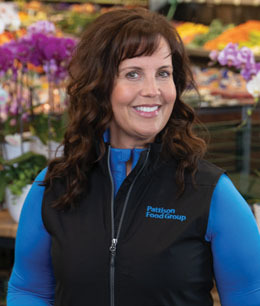
It’s one of the reasons why a large majority of employees stay for years. At Save-On- Foods alone, over 1,500 employees have more than 30 years of service. One employee retired recently after 50 years with the company, while another is in her 49th year of employment.
Jones himself is one of the company’s the longest standing employees. He was 16 years old and living in Cranbrook, B.C., when he got a job bagging groceries at the local Overwaitea Food Group—the banner that later became Save-On-Foods. That was 46 years ago.
Many encourage family members to join the company. Cope’s two daughters, for example, work at Save-On- Foods, which was ranked among B.C.’s top employers for 2022.
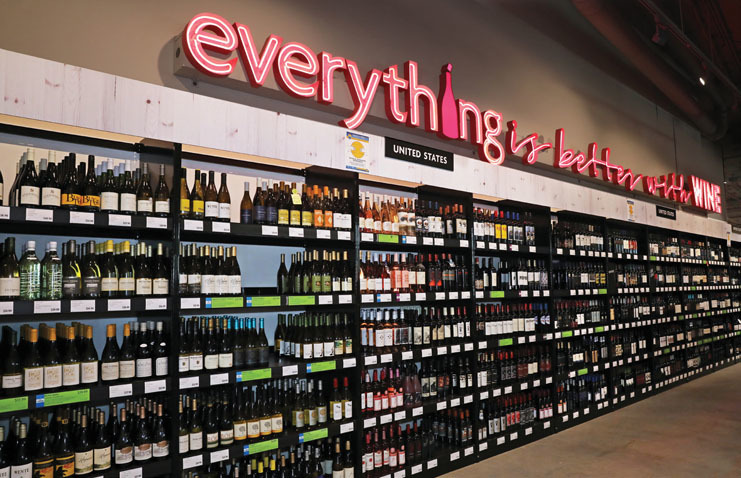
For Ferriman, who started at Save-On-Foods in March 2000—when she was in her 20s—her early days on the job felt like coming home.
“I knew Save-On-Foods was the place I wanted to spend my career,” she says. “I felt that way primarily because of the people, the values and the opportunities that I saw for those who work hard. The support you get is unbelievable— I know I wouldn’t be here in this role without the mentors I’ve had throughout my career.”
Talent and leadership development are priorities that the company backs with concrete investment. High-performing employees with one or more years of service can apply for sponsorship in a Master’s degree program, which the company supports with a $25,000 education grant.
So far, two employees have graduated and 13 are currently enrolled in Master’s studies, says Ferriman.
To bring in the next generation of employees, the company has partnered with seven western Canadian universities to offer co-op placements for students.
“Hopefully, if they do well, they’ll come back for another co-op and we can maintain a relationship and possibly offer them a job,” says Ferriman.
Evolving with the industry
Over his 46 years at Save-On-Foods and most recently at the Pattison Food Group, Jones has seen the industry evolve, in some ways that were subtle and incremental and in other ways that were transformative.
Technology has driven some of the most significant changes in recent years. By 2014, Save-On-Foods had already built its e-commerce platform—the first grocery retailer in Western Canada to do so, says Jones. When COVID-19 hit, the company was ready for customers to shop online.
“Our online business more than doubled during the pandemic,” says Jones. “It’s declined a bit in the last six to eight months because people want to go out and shop in person but it’s still quite strong. In some Save-On- Foods stores, e-commerce accounts for as much as 20 per cent of sales.”
From the start, the company chose to take a personalized approach to serving its online shoppers. Orders are picked by in-store staff, who push shopping carts through sections and aisles as if they were shopping for themselves.
Deliveries are also done by an in-house team with a company-owned fleet of trucks.
“We own the entire store-to-door experience,” says Nelson. “We think there’s value in having a team member pick groceries for you, and we have our own trucks and drivers. For this job, we hired customer service people who knew how to drive a truck—or who we could train to drive a truck—versus truck drivers who maybe knew a bit about customer service.”
Changing expectations
The conveniences brought about by technology have also changed what customers expect from a food retail experience. In past decades, satisfying customers meant keeping a well-organized store with fresh products and a wide selection of goods.
That still holds true. But today, says Jones, many customers also expect fast delivery—preferably in three hours or less—as well as products that meet their standards in areas such as animal welfare, farming sustainability and carbon emissions.
“We’ve worked together as an industry to make sure we do the right things and we’ve seen some good results,” says Jones. “For example, a lot more eggs today are free-run and more chickens are being raised cage-free.”
Customers also want more selections and more products that allow them to explore different cuisines from around the world. Canadians’ diverse ethnic backgrounds and love of travel, combined with the ease of looking up new recipes online, are among the key factors driving this demand, says Jones.
Nelson points to another important factor shaping the market: the growing diversity of communities in Western Canada—particularly in B.C.’s interior region—and in the Prairies. Through its PriceSmart banner, the Pattison Food Group is well positioned to meet the needs of the various ethnic groups in these communities.
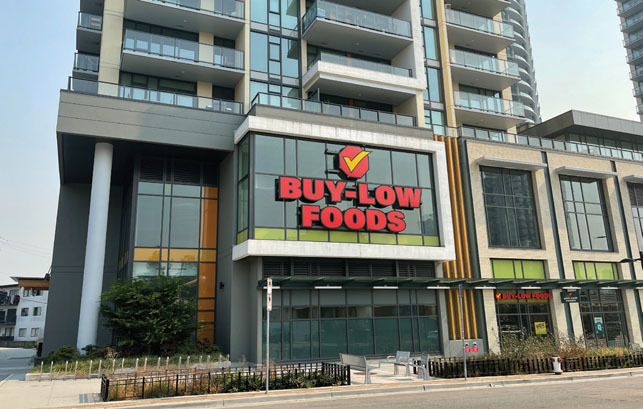
“And we know that anything we do to address the ethnic market will eventually also make its way into the mainstream because our customers are curious to try new things,” says Nelson. “That’s key to our strategy: our ability to give our customers unique and differentiated products.”
Shopping habits are changing too
The way customers shop also continues to change. Now that Canadians have become comfortable with buying their groceries online, many continue to do so but also want to shop in-store, says Nelson. More than ever, it’s critical for food retailers to be where their customers want to buy their groceries.
“We will continue to focus on improving our omnichannel capabilities,” says Nelson. “We’ve already been digitally-focused for some time, but we’re still working to be even better at it.”
Strengthening its supply chain and inventory systems are also top priorities at the Pattison Food Group. A notable trend that emerged during the pandemic was fewer store visits but significantly bigger baskets.
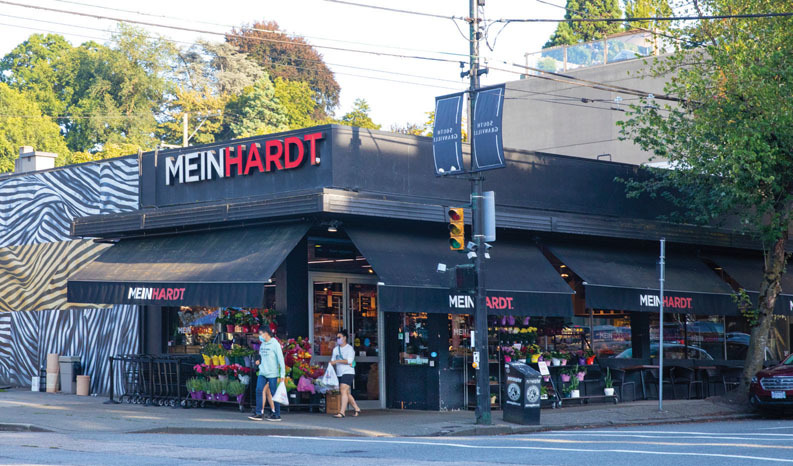
This trend has led to a just-in-case approach to inventory management at many Pattison Food Group banners, says Nelson.
“People today are more willing to stock up like they did a generation ago, versus in the early 2000s when it seemed like everyone was shopping daily because they wanted something fresh that they could cook that same day,” he observes. “From a food retailer’s perspective, that means the just-in-time inventory philosophy that’s become pretty common in the industry has to be adjusted to be more just-in-case our customers want to do a really big shop today.”
This relatively new trend—and the just-in-case response to it—isn’t driven only by the pandemic. Recent largescale disasters such as the floods and forest fires in B.C. surfaced hard lessons about the vulnerability of retailers that have chosen the efficiencies of light inventories and reactive supply chains.
“We definitely had some challenges when these disasters hit, with people being locked in and supplies being locked out,” says Nelson. “But as we always have throughout our history, we learned from these challenges. A big advantage is that we’re a nimble company that can react quickly to changing situations. There’s not a lot of red tape here.”
A very bright future
More than a year after the Pattison Food Group was formed, the executive team and banner leaders continue to explore ways to leverage their strength as a group. Growth and innovation are top items on the agenda and there’s excitement—along with a lot of curiosity—about what the path around the corner looks like.
Jones looks forward to seeing more deals brought to the table, to continue the company’s expansion in Western Canada and in the U.S. While Eastern Canada has not been a viable target—slim pickings when it comes to potential acquisitions—Jones isn’t ruling out a future entry into Ontario and Quebec.
“Everything’s been gobbled up but eventually you’ll see us make our way across Canada,” says Jones. “The one thing you need in business that’s not very common today is patience. I learned that from Jim (Pattison), who’s very good at saying ‘you have to be patient; the opportunity will come.’ So, we are being patient, but in the meantime, we’ll continue to grow and expand. The future is very bright.”
Sage Advice

Grocery Business recently sat down with Jim Pattison, founder, CEO and chairman of the Jim Pattison Group, to discuss the formation of the Pattison Food Group.
“We’re in the business of growing the business,” says Jim Pattison when asked about the strategy behind the creation of the Pattison Food Group, which was formed in February 2021 to bring all of the food banners under one corporate umbrella.
“We thought it was time to consolidate and implement a plan to grow in Western Canada and in the U.S. where we’ve already acquired two grocery businesses in less than a year.”
Indeed, the Pattison Food Group and its parent company are actively pursuing growth in the U.S. in grocery and other sectors, such as forest products.
“We’ve hired two full-time people in the U.S. to do nothing but look for opportunities to buy companies in the U.S. Right now, for our grocery business, we’re concentrating on Western Canada and the U.S. and expanding geographically. It’s a lot closer for us to look at Oregon and Northern California than places in the East.”

